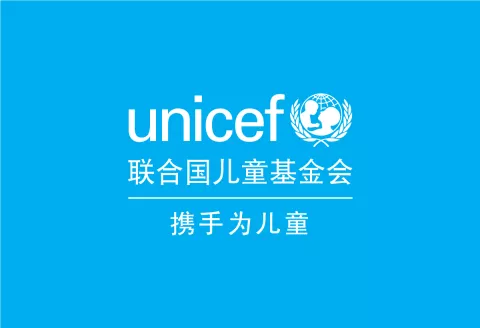State of The World's Children report marks 20 years of the Convention on the Rights
Launch of Chinese language version in Beijing is timed with Global News Day for Children Campaign
- Available in:
- 中文
- English
BEIJING, 20 November 2009 – The Chinese language version of a special edition issue of UNICEF's flagship The State of the World's Children report, tracking the impact of the Convention on the Rights of the Child and the challenges that remain, was released today on the 20th anniversary of the Convention's adoption by the UN General Assembly.
"The Convention on the Rights of the Child is the most ratified human rights treaty in human history," said UNICEF Executive Director Ann M. Veneman. "It has transformed the way children are viewed and treated throughout the world."
For the release of the special edition of the report in Beijing, UNICEF has joined with China's Xinhua News Agency in a global campaign to call attention to the situation of children and to focus world media coverage of child rights through the Global News Day for Children Campaign on 20 November.
"We would like to call this year's November the 20th the Global News Day for Children, because it is the first time in history that media institutions all around the world have joined hands to focus on a shared coverage subject," said Mr. Li Congjun, Executive Director of Xinhua News Agency.
In 1989, China co-sponsored the draft resolution that led to the adoption of the Convention by the UN General Assembly during its forty-fourth session. China signed the Convention on 29 August 1990 and ratified it on 2 March 1992.
The Convention has 193 ratifications, the process by which countries decide to be bound by the articles of an international treaty. It articulates a set of universal children's rights, such as the right to an identity, a name and a nationality, the right to an education, and rights to the highest possible standards of health and protection from abuse and exploitation.
These rights are based on four core principles – non-discrimination; the best interest of the child as primary consideration in matters that affect them; rights to life, survival and development, and respect for the views of children. The Convention also identifies the obligation of governments to do all they can to deliver these rights, and acknowledges the special role of parents in their children's upbringing.
More than seventy countries have incorporated children's codes into national legislation based on the Convention's provisions, and awareness and advocacy on child protection issues have increased markedly since the Convention was opened for signature 20 years ago. China's ratification of the Convention has led to the development of a strong body of legislation to help codify and standardize State protection of children.
"During the last two decades child survival and development in China have steadily improved. The under-five mortality rate was reduced by 54 per cent between 1990 and 2008, saving the lives of hundreds of thousands young children each year," said Dr. Hana Brixi, UNICEF China Officer-in-Charge and Chief of Social Policy and Economic Analysis.
Considerable progress has also been made throughout the world over the past twenty years:
- The annual number of deaths of children under five years of age has fallen from around 12.5 million in 1990 to an estimated 8.8 million in 2008, representing a 28 per cent decline in the rate of under five mortality;
- Globally, around 84 per cent of primary-school-age children are in class today and the gender gap in primary school enrolment is narrowing;
- Important steps have been taken to help protect children from serving as soldiers or trafficked into prostitution or domestic servitude; and
- The age of children getting married is rising in some countries and the number of girls subjected to genital cutting is gradually falling.
For China, as well as other countries, despite many achievements, there are still challenges ahead.
"As in other middle-income countries, economic advances have been uneven and the disparities across localities and population groups have grown wider," said Dr. Brixi of UNICEF China, "Infant mortality rates, for instance, are almost 5 times higher in the most impoverished provinces than in the wealthiest, and disparities in maternal mortality have not significantly narrowed in the last decade."
"The Government of China gives high priority to the work for children," said Mr. Zhu Hong, Deputy Director of the Department of International Trade and Economic Affairs of China's Ministry of Commerce. "The United Nations has acknowledged the achievements towards the implementation of the Convention and promotion of child rights. As the coordinating government department for China-UNICEF cooperation, the Ministry of Commerce will join efforts with other government departments and civil society to advance the cause of child rights."
Globally, children's rights are still far from assured, according to UNICEF.
"It is unacceptable that children are still dying from preventable causes, like pneumonia, malaria, measles and malnutrition," said Veneman. "Many of the world's children will never see the inside of a school room, and millions lack protection against violence, abuse, exploitation, discrimination and neglect."
DOWNLOAD ENGLISH EDITION
More on the CRC: http://www.unicef.org/rightsite/
Attention editors and broadcasters:
Multi media packages including photos and b-roll will be available starting from 16th of November at www.thenewsmarket.com/unicef
Media contacts
About UNICEF
UNICEF works in some of the world's toughest places, to reach the world's most disadvantaged children. Across 190 countries and territories, we work for every child, everywhere, to build a better world for everyone. For more information about UNICEF and its work for children visit www.unicef.org.
| Visit UNICEF China website: www.unicef.cn Follow us on Sina Weibo: http://weibo.com/unicefchina Tencent Weibo: http://t.qq.com/unicef Wechat: unicefchina |



